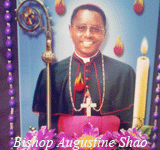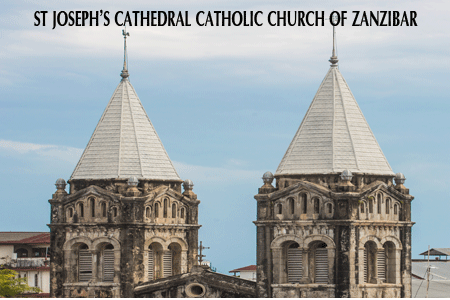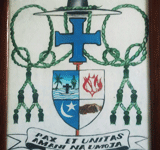

Ministiries |
|---|
History |

HISTORICAL BACKROUND OF THE CATHOLIC CHURCH OF ZANZIBAR TO BAGAMOYO LAND
Spiritan Activity Spreads:
In 1860 when the Congregation of the Holy Ghost took the mission over from the Jurisdiction exercised in Reunion, they followed the plans of Msgr. Fava to ransom slaves, educate them, and convert them to Christianity. Allowed to buy land, they purchased a very large building from an Arab landlord and slave trader who had many wives. Sultan Seyyid Majid bin Said (1856-1870) permitted three priests and six sisters from the diocese of Reunion - a French Island in the Indian Ocean - to begin work in Zanzibar offering them support in their work of looking after the sick and the poor and teaching their converts useful trades. Two years later the Bishop of Reunion entrusted the mission to the Spiritans and in the following year, Frs Anthony Horner and Edward Baur arrived in Zanzibar.
In 1868, Sultan Majid provided Fr. Anthony Horner with a suitable compound to start the “Christian Freedom Village” for ransomed ex-slaves. This land is now occupied by Marian Girls school. The Bagamoyo Journal called him quite often: “Our good friend.” On July 21, 1875, Sultan Seyyid Bargash bin Said (1870-1888) paid, invited by Fr. Antony Horner, an official visit to the headquarters and mother house of the Spiritans in Paris France, and was warmly welcomed by the Superior General, Fr. Schwindenhammer. With his visit, Sultan Bargash demonstrated his close relation with the Spiritan Missionaries of Zanzibar and Bagamoyo. (Fr. Horner in “Mission Catholique de Zanguebar” in 1880).
Many cubicles in the building were used to keep slaves waiting until the monsoon winds would bring the ships. Among the cubicles there is also a prison where the slaves were chained if they tried to escape. Since the missionaries bought slaves in order to give them their freedom and advance their human dignity, the Church was therefore associated with slave traders. Because of that confusion in understanding, the Catholic Church preferred that this old building not be considered an historical monument. Nevertheless, the historical signs of their activity are present as they are in the Anglican Church. The latter, which was built earlier and turned into an auction market of slaves, stands close by in Zanzibar City and is a well known historical monument to this period of slave trade.
St Joseph's Cathedral:
Construction of the Cathedral Church was begun in 1867 but was stopped when they
became aware that the site was a Muslim grave yard. There is no record of when the construction was resumed but the first official Mass was offered in the new building in 1897. Still the only Catholic Church in the Town, it was very much respected by the Sultan for the work that was being done. A modern day sketch of St. Joseph's Cathedral as it appears today!
The Church Reaches Out:
The Spiritan archives have a paper on Our Lady of the Angels Hospital written by Msgr. De Courmont. a Spiritan who was Vicar Apostolic of Zanzibar. He notes that the population of Zanzibar was growing and that it was composed not only of Arab conquerors and the black slaves but also of people from Madagascar, India, commercial cities of the Persia, and those who continued to come from Europe. "The population ... reached about 40.000..., i.e. half the total amount of Zanzibar inhabitants." Since some few were Christians, a way was opened for a mission at Mahonda. 36 kms. from town.

Home |search |facebook |Google|Tweeter |